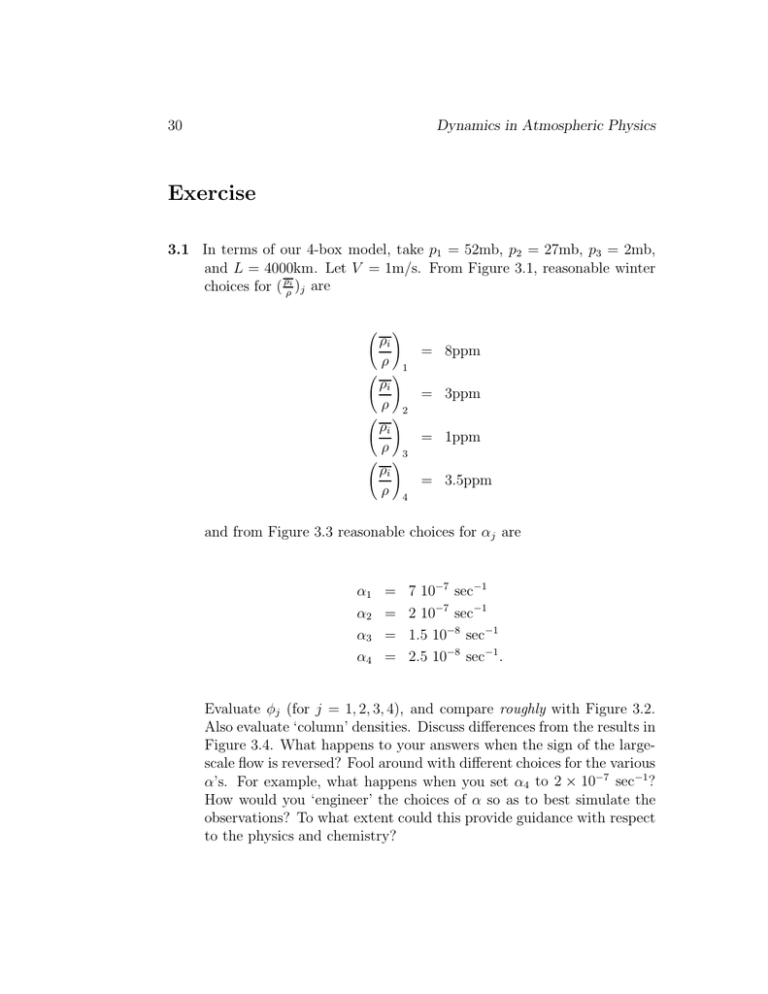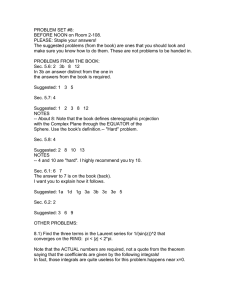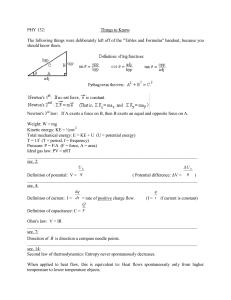Exercise
advertisement

30 Dynamics in Atmospheric Physics Exercise 3.1 In terms of our 4-box model, take p1 = 52mb, p2 = 27mb, p3 = 2mb, and L = 4000km. Let V = 1m/s. From Figure 3.1, reasonable winter choices for ( ρρi )j are � ρi ρ � � ρi ρ � � ρi ρ � � ρi ρ � = 8ppm 1 = 3ppm 2 = 1ppm 3 = 3.5ppm 4 and from Figure 3.3 reasonable choices for αj are α1 α2 α3 α4 = = = = 7 10−7 sec−1 2 10−7 sec−1 1.5 10−8 sec−1 2.5 10−8 sec−1 . Evaluate φj (for j = 1, 2, 3, 4), and compare roughly with Figure 3.2. Also evaluate ‘column’ densities. Discuss differences from the results in Figure 3.4. What happens to your answers when the sign of the largescale flow is reversed? Fool around with different choices for the various α’s. For example, what happens when you set α4 to 2 × 10−7 sec−1? How would you ‘engineer’ the choices of α so as to best simulate the observations? To what extent could this provide guidance with respect to the physics and chemistry? Effect of transport on composition 31 Figure 3.7: 6-box model. Note that the bottom of the 4-box model is at 52mb which does not include the bulk of the lower region in Figure 3.2 where the reversal in the meridional gradient of ozone occurs. Thus, the column densities are not expected to replicate those in Figure 3.4. If, instead of our 4-box model, we had a 6-box model of the sort shown in Figure 3.7we could choose the bottom to be at 100mb. Try to rig the properties of the 6 boxes (while not choosing values which are too unrealistic) in order to match Figure 3.4. What is needed? Again, try to ‘engineer’ choices of parameters to achieve a best simulation. Discuss the limitations of these models.



